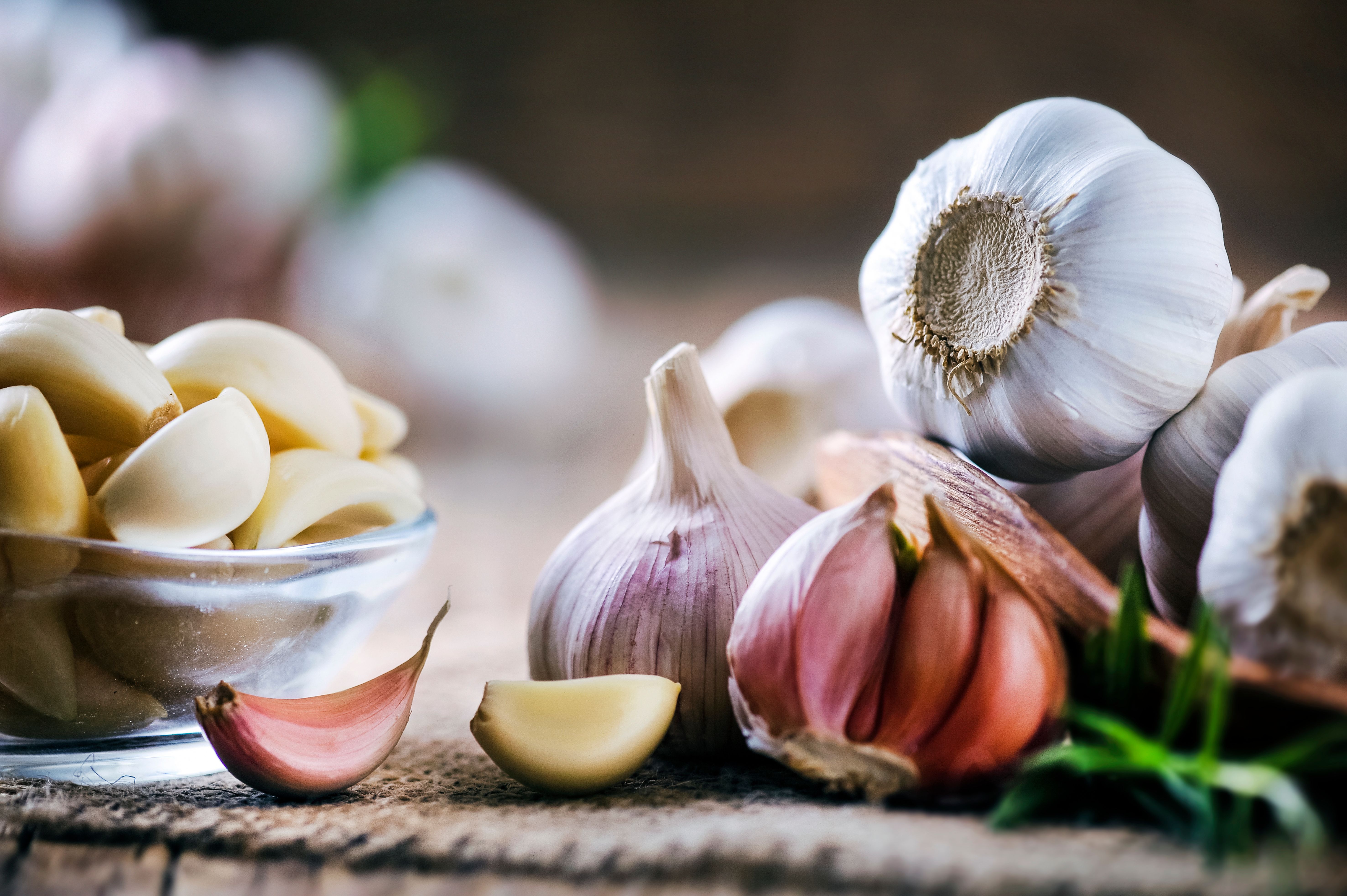Microwave-Assisted Extraction of Aged Garlic Compounds Shows Improvement Over Previous Analytical Methods
Fresh garlic and aged garlic, both brown and black, were all analyzed for their bioactives, in an attempt to expand those compounds’ applications as food ingredients and dietary supplements.
Research out of the Instituto de Química Orgánica General in Madrid, Spain claims to have optimized, for the first time, the simultaneous extraction of bioactives from aged garlic using microwave-assisted extraction (MAE) supported by analytical methods such as high performance liquid chromatography coupled to mass spectrometry (HPLC–MS) and hydrophilic-interaction liquid chromatography with evaporative light scattering detection (HILIC-ELSD) (1).
Garlic cloves on rustic table. Garlic in wooden bowl. Fresh peeled garlic and bulbs. | Image Credit: © Milan - stock.adobe.com

The study in the Journal of Chromatography A sought to expand the possible applications for organosulfur compounds (OSC) in garlic, in particular S-allyl-L-cysteine (SAC), beyond even their current use as food ingredients and dietary supplements. Fresh garlic cultivated in Las Pedroñeras, Spain was among the samples tested, from which garlic aged between 30 to 90 days was also produced for comparison, while aged black garlic was purchased commercially (1).
The myriad health benefits of garlic include its anticancer, antihyperglycemic, antihypertensive, anti-inflammatory, antimicrobial, and antioxidant components, but as the study specified, some may find the aroma or flavor of garlic unpleasant or develop upset stomachs after consuming (1). For those reasons, the researchers wanted to minimize such limitations while enhancing bioactives by exposing raw garlic to an aging process for this experiment. According to the study, SAC and other organosulfur compounds including ajoene, allicin, and diallyl sulfide are produced by the changes in chemical composition caused by aging, while polysaccharides are degraded to monosaccharides or oligosaccharides.
In previous analyses of garlic, solid-liquid extraction (SLE) has most often been used to identify SAC-enriched extracts, but ultrasound-assisted extraction (UAE) and microwave-assisted extraction (MAE) have addressed SLE’s limitations in efficiency, time of extraction, and solvent consumption (the solvent in this case being water) (1). The researchers preferred an experimental MAE technique in this instance because of its additional environmental friendliness, optimizing the procedure at 0.5 g of sample in 10 mL of water at 120 ºC for 60 min.
Chromatographic methods employed in the study varied depending on what the research team was aiming to find. HILIC-ELSD was used to analyze carbohydrates, while analysis and quantitation of OSC, hydroxymethylfurfural (HMF), and amino acids was performed by an HPLC system coupled to a single quadrupole mass spectrometer (QMS). Further identification of the OSC present in the garlic samples involved HPLC coupled to quadrupole time-of-flight mass spectrometry (QTOF-MS) (1).
Taking these conditions into account, the researchers reported high sensitivity in their experimental method, for which limits of detection were between 0.013 and 0.77 µg/mL, with repeatability of < 12% and accuracy of > 92% (1). All garlic extract samples were found to have antioxidant activity, with amino acids such as arginine and proline being among the most abundant bioactive content and OSCs including SAC and cycloalliin trailing behind (only traces up to 2.32 mg/g of SAC in dry sample). The study also detected bioactive carbohydrates, but only in fresh garlic or aged garlic that was processed under mild conditions.
These results were successful enough, however, for the research team to declare MAE a viable alternative to previously studied methods for simultaneous extraction of ingredients within aged garlic, especially with a nod to the approach’s usefulness in the food and nutraceutical industries (1).
Reference
(1) Jiménez-Amezcua, I.; González-Prada, A.; Díez-Municio, M.; Soria, A.C.; Ruiz-Matute, A.I.; Sanz, M.L. Simultaneous microwave-assisted extraction of bioactive compounds from aged garlic. J. Chromatogr. A 2023, 1704, 464128. DOI: 10.1016/j.chroma.2023.464128
Investigating 3D-Printable Stationary Phases in Liquid Chromatography
May 7th 20253D printing technology has potential in chromatography, but a major challenge is developing materials with both high porosity and robust mechanical properties. Recently, scientists compared the separation performances of eight different 3D printable stationary phases.
Characterizing Polyamides Using Reversed-Phase Liquid Chromatography
May 5th 2025Polyamides can be difficult to characterize, despite their use in various aspects of everyday life. Vrije Universiteit Amsterdam researchers hoped to address this using a reversed-phase liquid chromatography (RPLC)-based approach.
New Method Explored for the Detection of CECs in Crops Irrigated with Contaminated Water
April 30th 2025This new study presents a validated QuEChERS–LC-MS/MS method for detecting eight persistent, mobile, and toxic substances in escarole, tomatoes, and tomato leaves irrigated with contaminated water.

.png&w=3840&q=75)

.png&w=3840&q=75)



.png&w=3840&q=75)



.png&w=3840&q=75)


